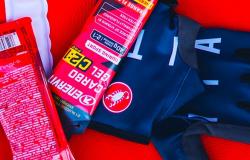Cane sugar, also known as raw sugar or brown sugar, is a type of sugar that has undergone minimal processing, retaining some of the molasses from the sugarcane plant. This gives it a distinctive brown color, a slightly moist texture, and a richer, more complex flavor than refined white sugar.
Here are the main components of cane sugar
- Sucrose: It is the main component, representing approximately 92-98% of cane sugar. Sucrose is a disaccharide made up of glucose and fructose.
- Minerals and trace elements: Cane sugar contains small amounts of minerals such as potassium, calcium, magnesium, iron and phosphorus. These are present in a more natural form than refined sugar.
- Vitamins: Although in limited quantities, cane sugar contains traces of some B vitamins, such as thiamine, riboflavin and niacin.
- Phenolic compounds: They are antioxidants naturally present in sugar cane, such as the flavonoid apigenin.
- Fiber: Brown sugar contains a small amount of dietary fiber, approximately 0.1-0.3% of its weight.
Types of cane sugar
There are four types of cane sugar.
The first is the light cane one; It has a mild molasses flavor and light brown color and is commonly used in baking and to make icings and sauces.
Another is dark brown sugar: the flavor in this case is stronger and has a darker brown color. It is often used in gingerbread, treacle biscuits, and barbecue sauces.
The last two are very similar to each other, even if they have some differences. There is turbinado sugar, minimally processed, which retains the larger crystals, giving it a coarse, sandy texture; it has a light brown color and a delicate molasses flavor; the second is demerara sugar, whose difference from turbinado sugar is related to the crystals, which are slightly larger, as well as a richer molasses flavor. It is often used for sprinkling fruit, desserts or coffee.
Uses of cane sugar
Brown sugar is a multifaceted ingredient, to be used in pastry making, for making biscuits, cakes and other baked products. Adds moisture, flavor and a subtle caramel color to baked creations. It is an excellent ingredient for finishing desserts, in glazes and sauces, because it provides a rich flavor and a slightly grainy texture.
Its versatility allows it to also be used in savory dishes to add depth of flavor and balance acidity. It is commonly used in marinades, barbecue sauces, and meat sauces.
It is also commonly found in drinks. In addition to sweetening coffee, tea and other beverages, it adds a more complex flavor profile than white sugar.
Here are the dangers for humans
While brown sugar is often perceived as a healthier alternative to white sugar, it’s important to note that they contain similar amounts of calories and carbohydrates. Both types of sugar should be consumed in moderation as part of a balanced diet.
Additionally, one must be careful with consumption, because it may contain traces of impurities and contaminants due to minimal processing. These can include heavy metals, pesticides and microorganisms. While levels may be low, it is essential to choose reputable brands that favor sustainable and responsible farming practices to minimize the risk of contamination.






